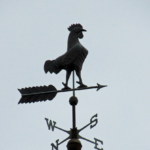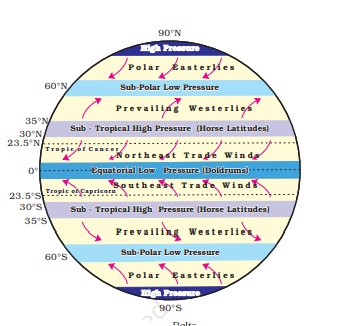Wind can be described as the movement of air from the high-pressure area to the low-pressure area. There are many types of wind such as permanent, seasonal and local winds. A wind is named after the direction from which it blows, e.g. the wind blowing from the west is called westerly.
The topic, ‘Types of Wind,’ is important for IAS Exam from both prelims and mains perspectives. This article will provide relevant facts about wind and its type. Aspirants can also download the types of wind notes PDF from the link provided in the article.
Types of Wind – UPSC Notes:- Download PDF Here
| Aspirants can kickstart their UPSC 2023 preparation now!!
To complement your preparation for the upcoming exam, check the following links: |
What is Wind?
It is an air movement having both direction and speed. It is made up of gusts and eddies that can only be felt and not seen, unlike rain and snow. Wind makes the leaves fall, sand move, trees wave, hair fly, etc. Since it cannot be seen, a conventional instrument is used to measure wind direction called weathercock or weather vane.

Types of Wind
There are three main types of wind, mentioned in the table below:
| Types of Wind | |
| S.No | Type |
| 1. | Permanent Winds |
| 2. | Seasonal Winds |
| 3. | Local Winds |
Type of Wind – Permanent Winds
The winds that blow constantly throughout the year are called Permanent Winds. They also blow constantly in a particular direction. There are types of permanent winds:
- Trade Winds – These are permanent winds flowing from east-to-west. It flows in the Earth’s equatorial region (between 30°N and 30°S latitudes).
- Easterlies – It is a prevailing wind blowing from the east. The trade winds in tropical regions and the prevailing winds in the polar regions are easterlies.
- Westerlies – These are prevailing winds that flow from the west towards the east. It flows in the Earth’s middle latitudes between 30 and 60 degrees latitude. Also called as anti-trades, these winds originate from the high-pressure areas in the horse latitudes and trend towards the poles and steer extratropical cyclones in this general manner.

Type of Wind – Seasonal Wind
The winds that change their direction with onsets of different seasons. These are hence called as Seasonal Winds. A monsoon is a type of seasonal wind in low-latitude climates that seasonally changes direction between winter and summer. Monsoon is prevalent in India.
Type of Wind – Local Wind
These blow only during a particular period of the day or year in a small area. For example, land and sea breeze. The types of local wind are given below:
- Land Breeze – It is a wind that flows from the land towards the sea. It flows often at night.
- Sea Breeze – It is a wind that blows towards land from the direction of a large water body. Sea breeze develops due to differences in air pressure created by the differing heat capacities of water and dry land.
- Anabatic Winds – These Winds are upslope winds driven by warmer surface temperatures on a mountain slope than the surrounding air column.
- Katabatic Winds – Katabatic winds are downslope winds created when the mountain surface is colder than the surrounding air and creates a downslope wind.

Names of Local Winds around the World for UPSC Prelims
The local wind is known with different names in different regions across the world. The table below mentions the list of names of local winds that can be asked in UPSC 2022 prelims exam.
| List of Names of Local Winds of the World | |
| Name | Region |
| Abrolhos | Brazil |
| Alisio | Carribean |
| Alize | Central Africa and the Caribbean |
| Barguzin wind | Russia |
| Berg | South Africa |
| Harmattan | Central Africa |
| Ghibli | Libya |
| Loo | India, Pakistan |
| Pampero | Argentina, Uruguay |
| Föhn or foehn | Alps, North Italy |
| Chinook | Rocky Mountains |
| Roaring Forties | Southern Hemisphere |
| Southerly Buster | Sydney |
Types of Wind – UPSC Notes:- Download PDF Here
Related Links:
| Structure of the Atmosphere | UPSC Geography – NCERT Notes |
| Climate Change | Circulation of the Atmosphere |


Comments